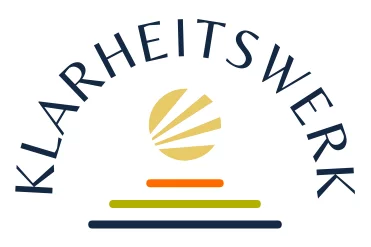Life Architecture or Life Management? The One Mistake We Make in Both Our Lives and Our Businesses.
We spend years optimizing what already exists. In our companies, we call it "continuous improvement" or "change management." In our personal lives, we call it "being realistic." But in both cases, we risk making the same fundamental error: we manage the past instead of designing the future.
Most planning and change initiatives, whether personal or professional, follow a familiar pattern. They start with what is tangible and known.
In Our Personal Lives: The Trap of Life Management
We look at our lives and see: Where do we live, and who are we surrounded by? (Environment). How do we act to meet the expectations of others or follow our own habits? (Behavior). What skills have we acquired over the years? (Capabilities).
From these circumstances, we often unconsciously derive our values and beliefs—mostly adopted from our upbringing and social circles. This forges an identity ("That's just the way I am"), and based on this identity, we set goals that fit. Goals that perpetuate the existing system but rarely challenge it.
This isn’t shaping your life. It's efficient life management. You're optimizing a system you never consciously designed.
In Our Businesses: The Cult of Incrementalism
In organizations, the pattern is identical. We analyze the status quo: our markets, our offices, our IT systems (Environment). We audit our processes and workflows (Behavior). We create competency matrices (Capabilities). Based on this analysis, we set "realistic" quarterly and annual goals.
The deeper levels, like values and identity? They often become little more than interchangeable slogans on the "About Us" page, disconnected from daily reality. The result isn't change; it's the continuation of the status quo in small, manageable steps.
This isn’t transformation. It's incrementalism. You're just polishing the present, hoping it will be good enough for the future.
The Logical Levels model, developed by Robert Dilts, powerfully illustrates why this bottom-up approach is doomed to fail when aiming for genuine, profound change. It reveals that the most powerful levers for transformation are at the top of the pyramid, not the bottom.
The levels build on one another:
Anyone who initiates change only on the lower levels (Environment, Behavior, Capabilities) without addressing the upper levels will only create superficial adjustments. These adjustments will quickly be rejected by the "immune system" of the organization or one's own personality.
True transformation, whether personal or organizational, begins at the top. It deliberately reverses the order.
In the end, it comes down to a fundamental choice. The bottom-up approach is the path of the archaeologist. They excavate the existing, analyze it, polish it, and place it in a display case. It is a safe path, based on what is already there. It preserves, but it does not create.
The top-down approach is the path of the architect. They begin with a vision on a blank sheet of paper. They design a bold new structure, unconstrained by the ruins of the past.
Yes, this architectural path requires courage. It can be painful, demanding that we let go of cherished certainties and old identities. But it's the only path that leads not to an improved yesterday, but to an intentional new tomorrow.
Routines, employment contracts, subscriptions, volunteer roles, relationship rules, societal expectations: these are all commitments.
Some are spoken. Many are not. What they all have in common is that they demand our time, money, energy, and attention—and they shape our decisions. Often, without us consciously realizing it.
As long as life is running smoothly, we barely notice.
But in moments of dissatisfaction or exhaustion, it becomes
clear just how powerful these commitments are. And how
difficult it is to steer in a new direction—even when we know
something no longer fits.
Commitments are not inherently bad. On the contrary:
well-chosen commitments provide support, structure, and a sense
of purpose.
They help us achieve our goals, be reliable, and offer a degree
of security.
They become problematic when they no longer align with what is
truly important to us. Or when we never consciously chose them
but simply "slid into" them.
Then they become a burden.
And a brake on our progress.
Anyone who consistently lives in opposition to their own needs eventually loses their inner compass. All that remains is a vague feeling of "Something isn't right." But what, exactly? And what is the alternative?
This is when two things are needed:
Clarity and Structure.
A structured process to find clarity:
The goal is not a perfect life, but an aligned one. A life in
which commitments are a lever for fulfilling your desires and
goals—not a burden.
For a life that feels like your own again.
